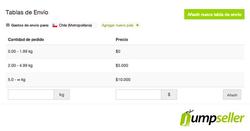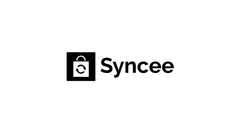Shipping is not just logistics — it’s part of your customer experience, conversion rate, and, when done right, a competitive advantage.
Table of Contents
- Why a shipping strategy matters
- 1. Understand your business model and shipping costs
- 2. Define the shipping options you’ll offer
- 3. Set up your shipping rates in Jumpseller
- 4. Selecting and integrating carriers
- 5. Order processing (fulfilment)
- 6. Transparency and tracking for customers
- 7. Continuous optimization and KPIs
- Quick checklist for configuring shipping in Jumpseller
- Frequently Asked Questions (FAQ)
- Conclusion
Why a shipping strategy matters
Shipping costs and delivery expectations directly affect purchase decisions. A few key points:
- Many customers abandon their carts when shipping costs appear as a surprise during checkout.
- A clear and competitive shipping policy increases conversion, reduces returns, and improves brand perception.
- Jumpseller allows you to manage zones, shipping methods, carrier integrations, and tracking — but the strategy is up to you.
1. Understand your business model and shipping costs
Before adjusting any settings, gather this information:
- Stock origin: in-house warehouse, dropshipping, or 3PL — each has different timelines and costs.
- Product type: weight, dimensions, fragility, and value — bulky or fragile items increase shipping costs.
- Geographical scope: local, national, or international.
- Order volume: higher volumes may qualify for negotiated rates.
- Hidden costs: packaging, handling, insurance, returns.
Create a simple table with your average shipping cost per order (transport + packaging + handling). This will help you decide whether to absorb or pass on shipping costs.
2. Define the shipping options you’ll offer
Offering multiple options improves conversion rates. Some possibilities:
- Free shipping (on all orders or above a minimum purchase).
- Flat-rate shipping (same price regardless of weight).
- Weight-based rates (best for stores with varied products).
- In-store pickup / Click & Collect (if you have a physical location).
- Express or same-day delivery (premium pricing for customers who value speed).
- International shipping with zone-based rules (EU, Latin America, etc.).
- Optional insurance or returns coverage for valuable items.
Tip: Always communicate shipping costs and delivery times before checkout to reduce cart abandonment.
3. Set up your shipping rates in Jumpseller
Here’s how to structure your rates effectively:
- Create zones: group destinations with similar shipping profiles (local, national, international).
- Choose the right rate type: flat, weight-based, or real-time carrier calculation.
- Include handling and packaging costs.
- Set free shipping thresholds to increase average order value.
- Experiment and measure: try free vs reduced-rate shipping and monitor impact on conversion and profit margin.
In your Jumpseller admin: go to Settings > Shipping to create zones, methods, and rates. If you work with carriers, you can integrate them for real-time rate calculation.
4. Selecting and integrating carriers
Choosing the right carrier mix is key:
- Coverage and speed: ensure carriers cover your priority regions and meet promised delivery times.
- Cost vs reliability: cheaper services may work for low-margin products, while tracked shipping suits higher-value items.
- Integrations: connect carriers offering APIs or direct Jumpseller integrations to generate labels and tracking numbers automatically.
- Dropshipping/3PL coordination: confirm handling times and SLAs.
- Extra services: weekend delivery, pickup points, insurance, reattempts.
5. Order processing (fulfilment)
Optimize your internal workflow from purchase to dispatch:
- Automate label creation, order status updates, and tracking notifications whenever possible.
- Manual flow: for smaller operations, you can print labels and update order statuses manually.
- Quality control: double-check weight and contents before sealing packages.
- Labeling: include packing slip and clear shipping label.
- Key metrics: average fulfilment time, on-time delivery rate, error/incidence rate.
6. Transparency and tracking for customers
The post-purchase experience matters:
- Show delivery estimates (e.g., 2–4 business days) early in the process.
- Provide tracking links as soon as the order ships.
- Clear return policy: explain costs, timelines, and procedure.
- Proactive communication: inform customers about delays or delivery issues before they contact you.
7. Continuous optimization and KPIs
Keep refining your process through data:
- Shipping cost vs revenue ratio.
- Cart abandonment rate due to shipping.
- On-time delivery percentage.
- Incidents/returns rate.
- Average order value with and without free shipping.
Use these insights to renegotiate carrier rates, adjust free shipping thresholds, or revise delivery options.
Frequently Asked Questions (FAQ)
Should I offer free shipping?
It depends. Free shipping increases conversions but lowers margins. Many stores offer it above a purchase threshold to raise the average order value.
How do I handle international returns?
Specify in your returns policy whether the customer or store covers the cost. For occasional cases, the customer might pay; for brand reputation, consider covering key markets.
What if a carrier misses delivery deadlines?
Contact the carrier, open a claim, and proactively inform the customer. If delays persist, review your carrier agreements.
Practical example
- Product: T-shirts (200g each).
- Origin: Spain (own warehouse).
- Zones: Spain, EU, international.
- Policy: Free shipping on orders over €30; flat rate €3.99 for Spain; weight-based for international.
Expected outcome: higher conversions on orders above €30 and stable margins on smaller orders.
Final tips and best practices
- Transparency: show costs and delivery times early.
- Simplicity: avoid overwhelming customers with too many options.
- Branding: use branded packaging for recognition without overspending.
- Returns: establish a clear process to save operational costs.
Conclusion
A well-thought-out shipping strategy reduces cart abandonment, improves conversion rates, and strengthens customer loyalty. Jumpseller gives you the tools to implement it — the key is in smart setup and continuous optimization.






